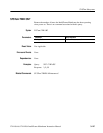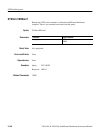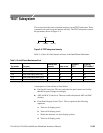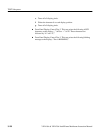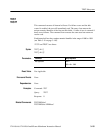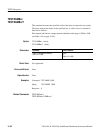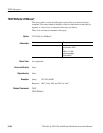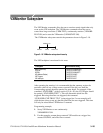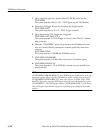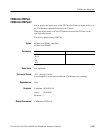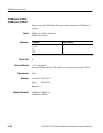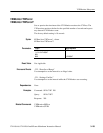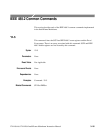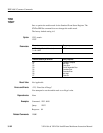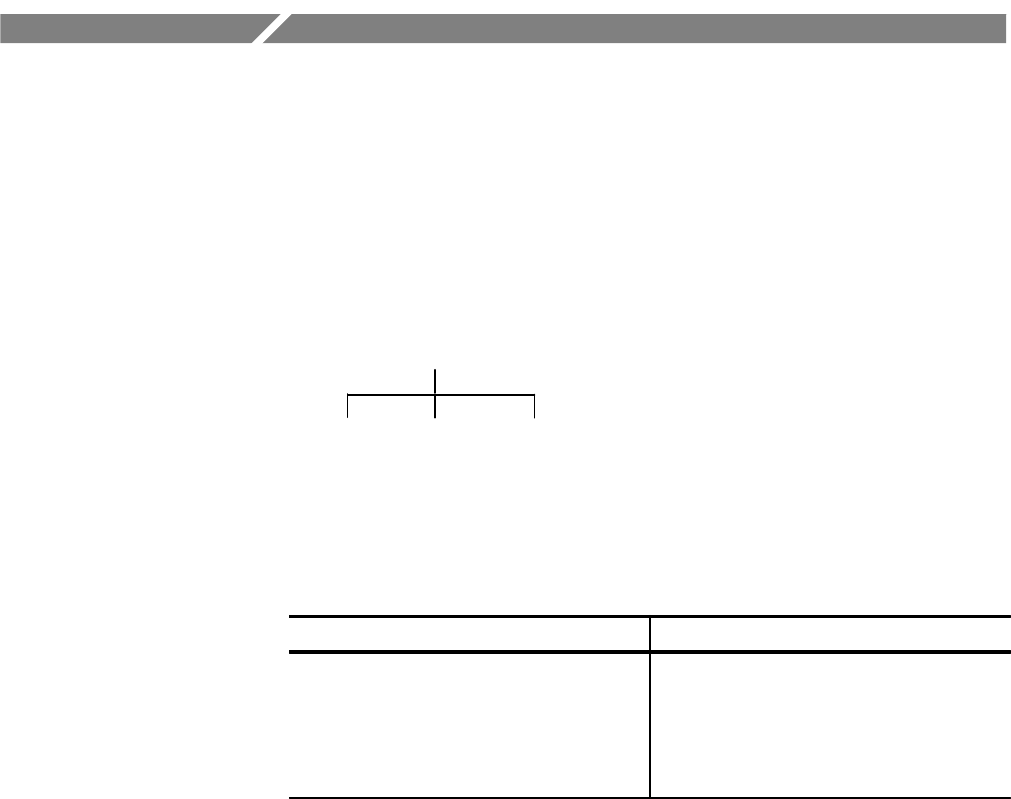
VX1410A & VX1420A IntelliFrame Mainframe Instruction Manual
3–155
VXIMonitor Subsystem
The VXI Monitor commands allow the user to monitor certain signals that only
occur on the VXI backplane. The VXI Monitor commands allow the user to
control how long to monitor (VXIM:TINT), continuously monitor (VXIM:RE-
PEAT ON) and to start the VXImonitor (VXIM:STATE ON).
The VXIMonitor subsystem controls the parameters shown in Figure 3–10.
VXIMonitor
TINTervalSTATe
REPeat
Figure 3–10: VXIMonitor subsystem hierarchy
The VXI backplane is monitored in six areas:
<VXI signal> Retrieve results using
BERR (Bus Error)
SYSFAIL
ACFAIL
AS (Address Strobe)
VXI Triggers
VXI Interrupts
STAT:OPER:VXIM:BERR?
STAT:OPER:VXIM:SYSF?
STAT:OPER:VXIM:ACF?
STAT:OPER:VXIM?
STAT:OPER:VXIT?
STAT:OPER:VXII?
After operating the monitor, it is recommended that the summary register be
queried to check if any of these events occurred. If the bit is set, then the
corresponding register should be queried for more detail. For example, if the
command “STAT:OPER?” yields a result of 32 (0 x 20), the VXI Trigger should
be queried (“STAT:OPER:VXIT?”). This will determine which line was
triggered. Knowing what line was triggered, the command
“STAT:OPER:VXIT:TRIG? TTL2” (using trigger line 2 as an example) will
yield the time (since power up) that this particular line was triggered. This time
will only be erased when VXI Monitor is restarted.
Programming example;
1. Set up VXI Monitor to run continuously:
VXIM:REPEAT ON
2. For this example, assume that an external VXI module set a trigger line,
asserted SYSFAIL, and a Bus Error occured.



